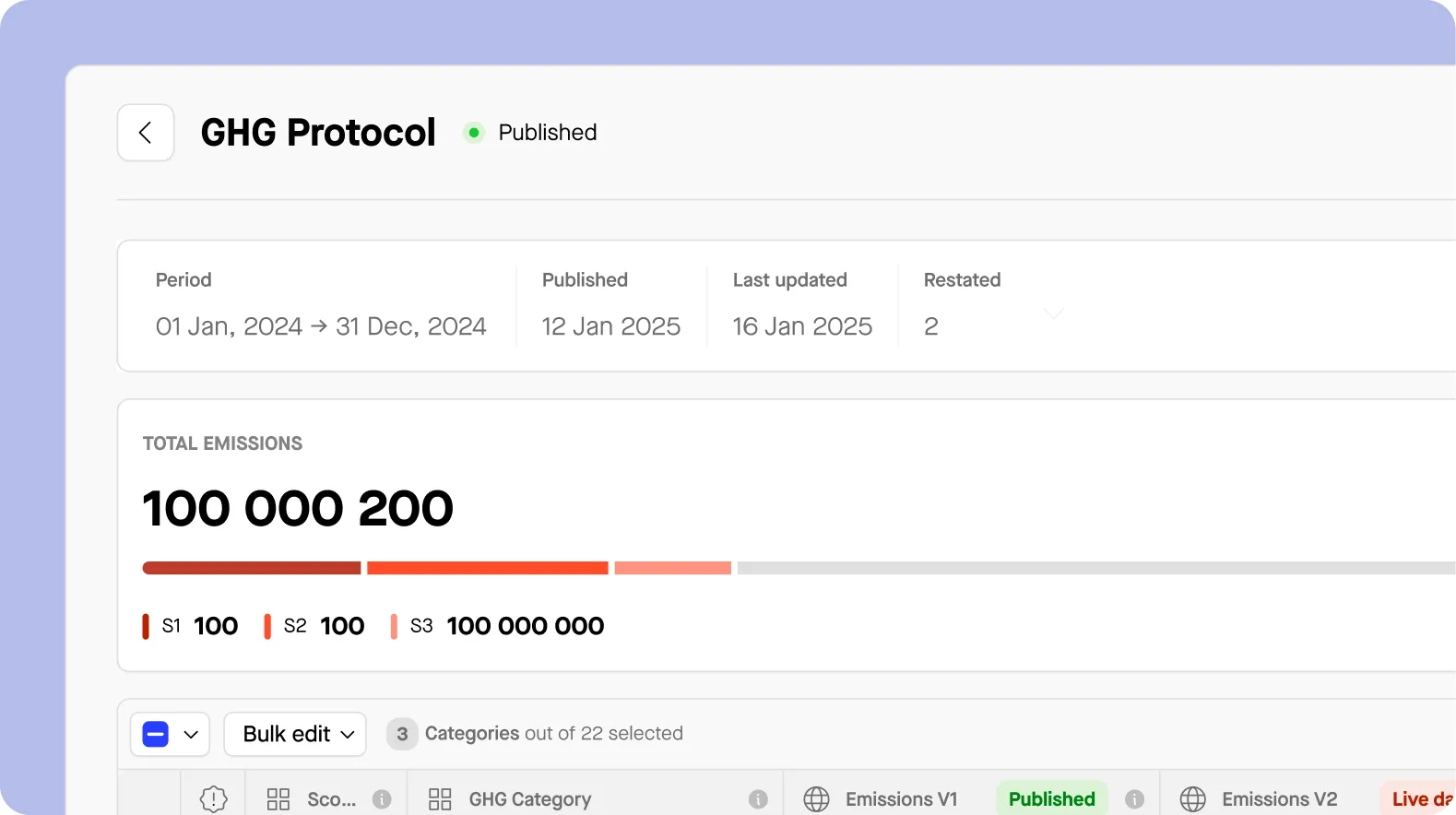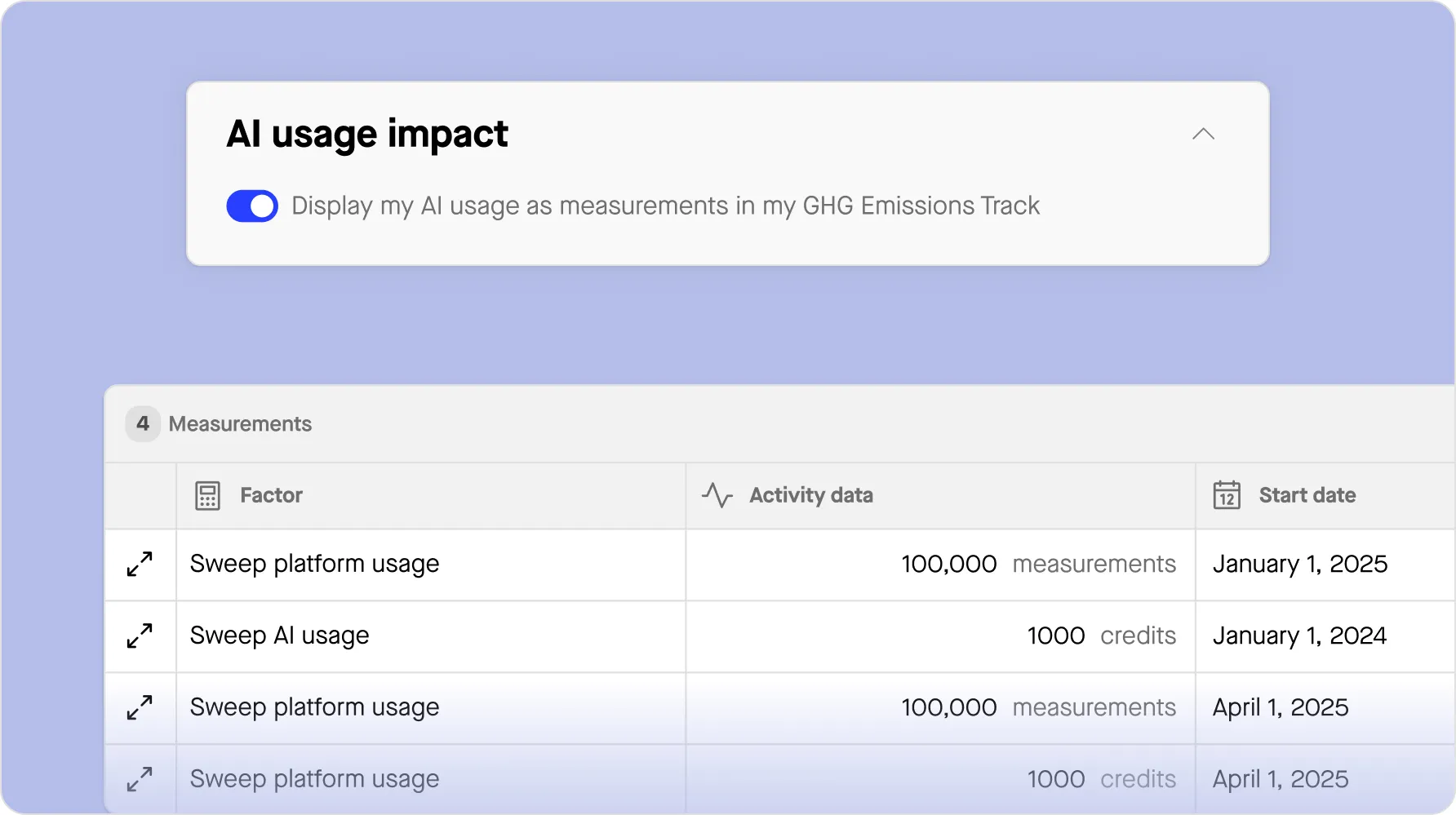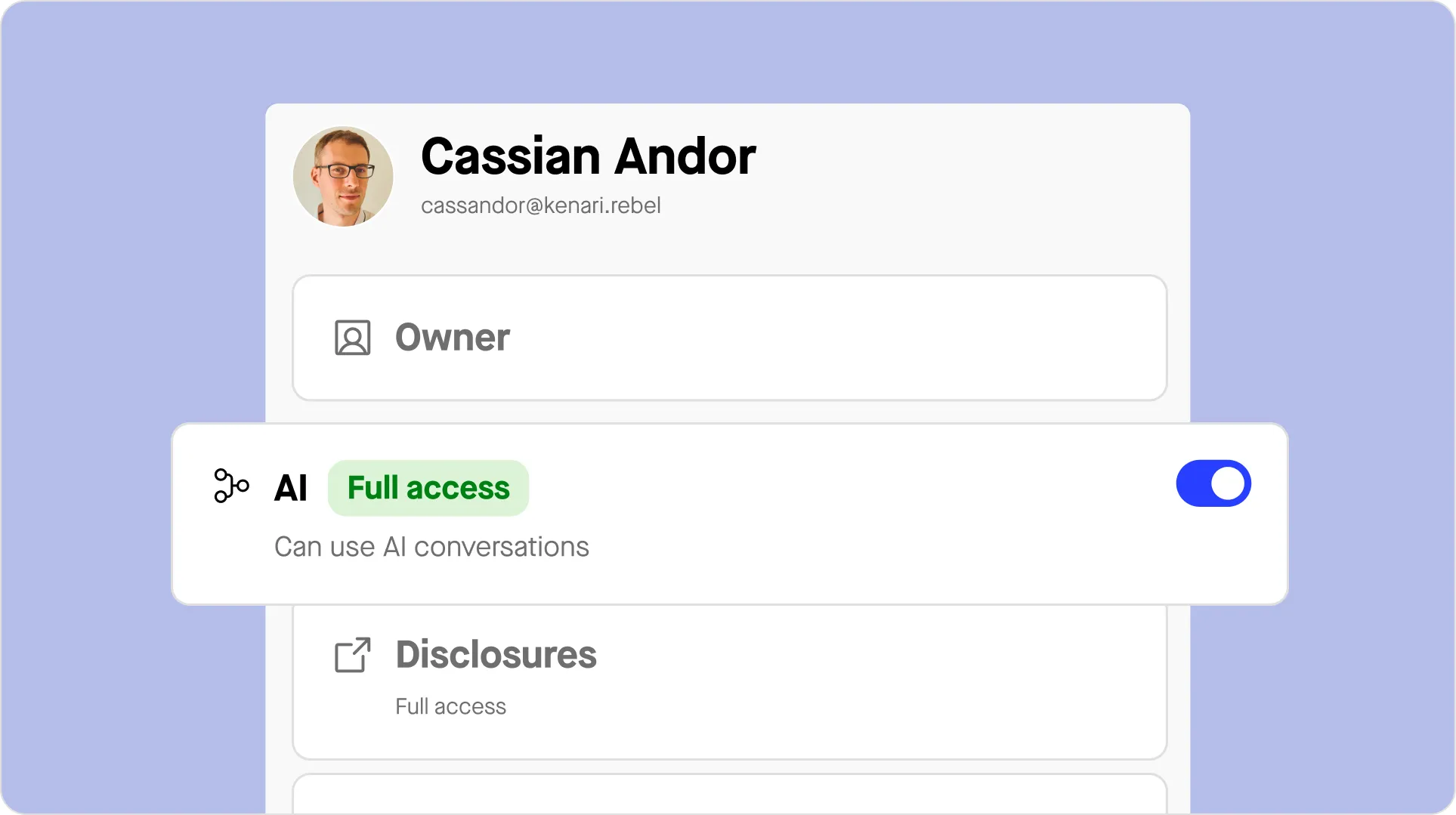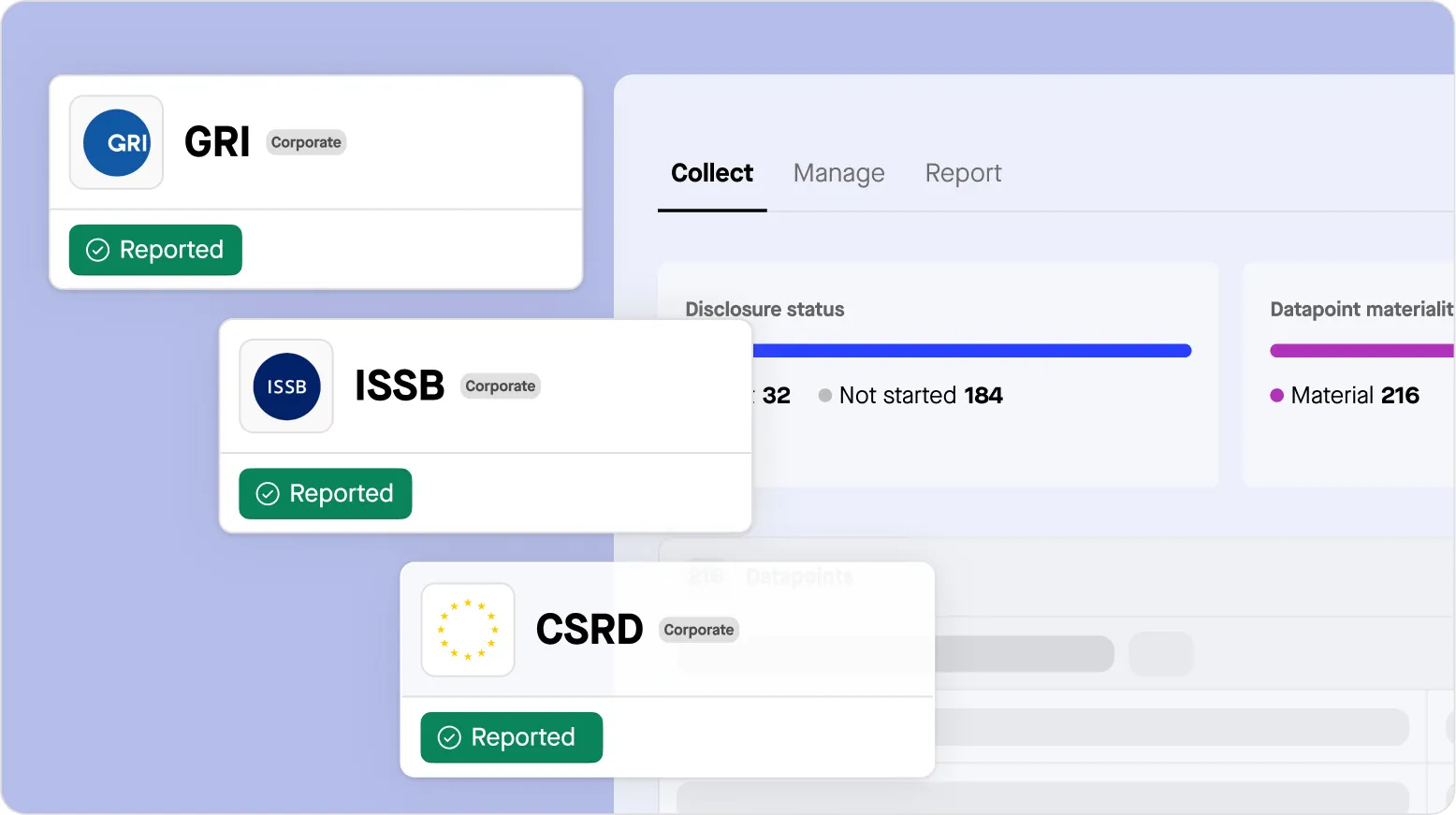The energy cost of AI matters
Training and running AI models uses a serious amount of energy. From model training to inference (responding to queries, generating disclosure text, mapping data), each step consumes power — and that translates into carbon emissions. As AI becomes integral to sustainability reporting, these hidden costs can add up.
Sweep recognises that if AI is part of the solution, it must also be part of the accountability. That means reducing our carbon impact, and being transparent and accountable by making it visible to our users.

Introducing the Impact Tracker
One of the ways Sweep leads in responsible AI is through the Impact Tracker. We help you automate sustainability work – impact, and we also help you track the footprint of using AI itself inside our platform – transparency and accountability.
With the Impact Tracker, you can see metrics about your AI usage: energy consumed, carbon impact, maybe water where relevant. These are not buried somewhere hard to find. They are surfaced so you can make informed trade-offs: when automation is worth it, where you might want to limit usage, and how to balance scale with sustainability.
We believe in being transparent. We don’t hide from AI’s impacts. We make them visible.

Using AI deliberately and efficiently
Responsibility means using AI in the right places. At Sweep, that means designing agentic agents that add measurable value — handling data mapping, survey responses, ESG disclosures, dashboards, and more — but only when those steps improve efficiency, data quality or collaboration.
We avoid unnecessary computation, we optimize workflows so AI does what you need without excess, and we ensure you always have the ability to adjust or opt out. Efficiency is not just about speed, but about environmental cost, too.

Full control over usage
We never use your data to train generative AI models. That said, you have full control over your usage and can opt out of these features either company-wide or for specific users.
Company-wide: In Company Settings, under Security, toggle Sweepy AI on or off to enable or disable conversational features like widget or formula configuration.
Individual access: In User Settings, enable or disable conversational AI features for specific users or groups through role permissions.
These controls give you flexibility and oversight over your company’s access to these features, letting you decide how you and your team interact with Sweep.
From transparency to trust and impact
When you combine automation with accountability, something powerful happens. You reduce manual work and errors. You increase confidence in your reporting. Your teams collaborate more effectively. And you can see the environmental impact not just of your operations, but of your tools themselves.
Sweep helps you elevate sustainability beyond compliance and into a source of insight and engine for growth. The Impact Tracker is the foundation for trust. It shows your stakeholders, regulators, auditors that you care about the entire impact, including digital tools.

Responsible AI is the future
AI will continue to grow in capability and usage. That growth brings opportunity, but also responsibility. Using AI poorly could increase your carbon footprint, introduce risk, and erode trust. Using it well can accelerate your decarbonisation, improve transparency, and help you meet ESG and regulatory goals with integrity.
At Sweep, we commit to both: powerful AI agents AND responsible practice. With human-in-the-loop oversight, full visibility through tools like Impact Tracker, and deliberate, efficient design, we aim to lead by example.








